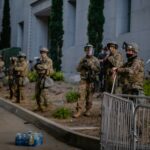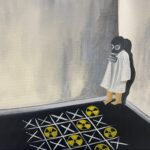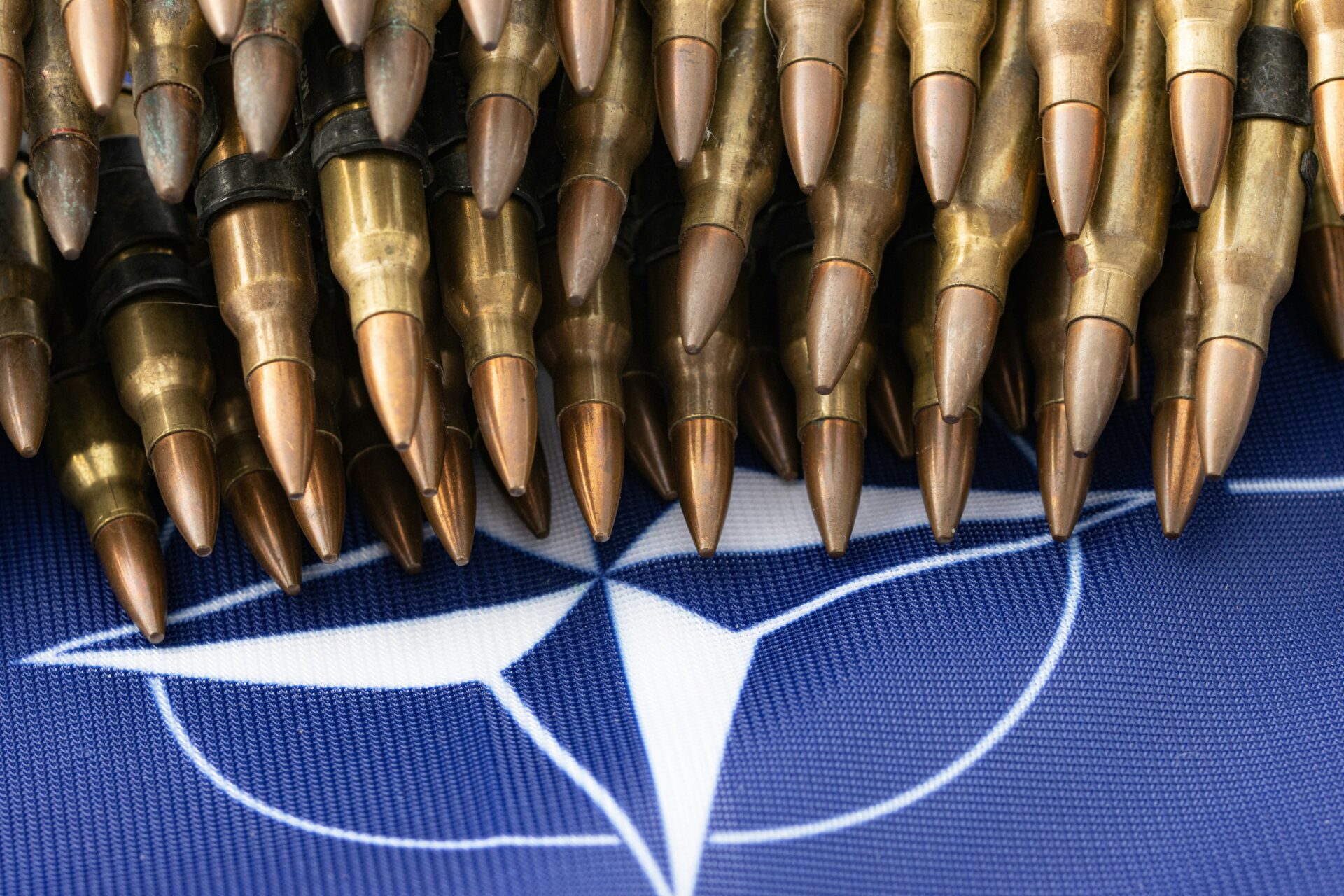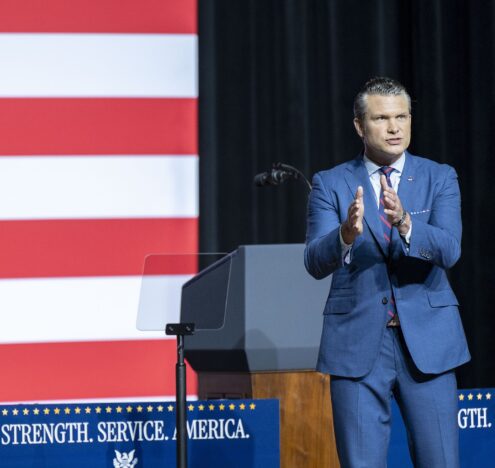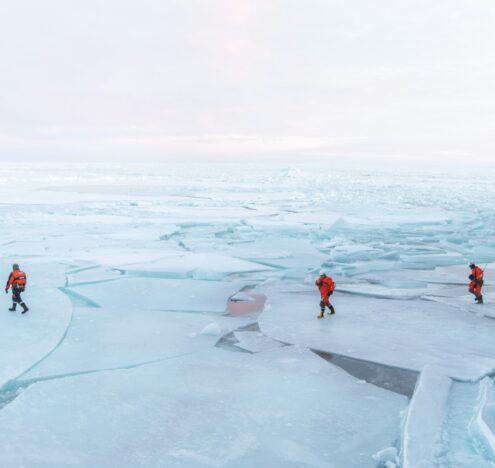“Adults in a Room” is a series in collaboration with The Stimson Center’s Reimagining US Grand Strategy program. The series stems from the group’s monthly networking events that call on analysts to gather virtually and hash out a salient topic. It aims to give you a peek into their Zoom room and a deep understanding of the issue at hand in less than the time it takes to sip your morning coffee without the jargon, acronyms, and stuffiness that often come with expertise.
Established in 1949, the North Atlantic Treaty Organization (NATO) has seen numerous iterations of its purpose, role, and effectiveness as a multinational defense alliance. Now, over three-quarters of a century since its founding, NATO has amassed large swathes of both champions and critics — claiming that the treaty alliance has had a range of effects, from preventing large-scale war across Europe to wasting countless funds to ultimately aggravate an increasingly threatened Russia.
With this history as a backdrop, the Reimagining US Grand Strategy program’s May 2024 roundtable brought experts together to discuss the future of NATO. The conversation focused on NATO’s shifting role and whether or not it is poised to continue serving in that role moving forward. Many also discussed the perceptions and buy-in of European member states, positing that there may be a future for NATO that, unlike its current iteration, depends less on the United States.
Below, six of these experts weigh in on the topic of NATO and its potentially tenuous path forward.
Paul Poast, Associate Professor, Department of Political Science, University of Chicago
There are a host of ways to think about NATO’s role in European security over the past 75 years. One could draw on the apocryphal statement by Hastings Ismay, the organization’s first secretary general, to reflect on how NATO has successfully kept “the Soviet Union out, the Americans in, and the Germans down.” Or one could simply point to the growth of membership over seven decades, noting that the alliance’s growth, to the point of bringing in countries with a long-standing history of formal neutrality, says much about the enduring value of the alliance.
But I think it is perhaps more useful to explore how NATO evolved through three Ds: deterrence, democracy, and defense. From NATO’s creation in 1949 to the end of the Cold War, NATO’s primary mission was that of deterrence: to prevent the Soviet Union from launching an invasion in Europe or seeking to undermine the Western European countries from within.
With the collapse of the Soviet Union following the end of the Cold War, that need for deterrence was gone. But rather than portending the end of the alliance, the alliance found a new mission, one actually enshrined in the preamble of its founding treaty: to support democracy. Specifically, NATO membership expanded to include many of the newly democratic former Warsaw Pact countries and then eventually former Soviet Republics, namely the Baltic states of Lithuania, Latvia, and Estonia. While the extent to which NATO actually made democracy a central pillar of its post-war policy is questionable, the shift in emphasis and mission was notable.
Yet, as Russia resurged in the late 2000s and early 2010s, the mission of NATO shifted not to supporting democracy’s or deterring attack, but to defending states experiencing Russian aggression. More precisely, NATO has been actively involved in supporting Ukraine following the 2014 taking of the Crimean Peninsula, the onset of conflict in Eastern Ukraine following that annexation, and the subsequent attempt by Russia to fully invade the country in 2022. For the first time in its history, NATO was not engaged in a war where Russia was the adversary.
How well NATO accomplished these tasks ultimately depends on thinking through the counterfactual: how would Europe have looked without NATO, either during the Cold War or after? That is a notoriously difficult question to answer, but it seems that one thing is clear. While NATO may not have brought about the best possible outcome, it surely contributed to avoiding the worst possible outcome, at least from the US perspective.
There has not been another war on the continent at the scale of the European theaters since World War II. Nuclear proliferation on the continent was avoided. There hasn’t been a need to build another American military cemetery on foreign soil. While the “end of history” moment was not realized, neither was a complete “back to the future” return to instability and major power violence.
Joshua Shifrinson, Associate Professor, School of Public Policy, University of Maryland
NATO, we are told, is among the soundest strategic decisions the US ever made. Not only did the alliance help the US win the Cold War, but it has been central in the post-Cold War world to (1) ensuring European peace; (2) avoiding a new European hegemonic threat; (3) enshrining democracy in Central and Eastern Europe; and (4) advancing the so-called “liberal international order.” The alliance, in other words, has been good for the US and Europe.
For sure, NATO made sense as a way of balancing the former Soviet Union and forestalling Soviet hegemony during the Cold War. Likewise, temporarily sustaining the alliance following the Cold War’s denouement was a reasonable hedge. The broader successes assigned to the alliance, however, are highly questionable.
For one thing, NATO has become unworkable as it has expanded to include a host of disparate states with disparate interests. Its defense functions have atrophied and, in any case, the alliance did not take defense seriously for decades — it even lacked plans to defend much of its Eastern Flank into the 2010s. Contrary to popular wisdom, there is strong evidence that Russian aggression has been driven by fear of NATO and the challenge the alliance poses to Russian interests. Similarly, the alliance’s centrality to “the liberal order” ought to be viewed skeptically given that its members have often used NATO to pursue policies — such as the Kosovo operation –- that are in tension with the principles of the “liberal order.” Nor, as Paul Poast and Alexandra Chinchilla show, did it promote democratization in post-Communist states.
Above all, NATO’s post-Cold War centrality to forestalling a possible European hegemon and the sort of internecine conflict that characterized the early 20th century is likely overstated. The key fact here is that Europe from the mid-1990s through today has had a stable distribution of power among its major players, and potential counterbalancing coalitions among its smaller states. The prospect of a European hegemon emerging — or even a regional power concluding that conquest could pay — was thus exceptionally limited. Under these conditions, Europe may have relatively been less stable without NATO, but that is not the same thing as saying Europe would have seen all-out conflict — let alone World War III — without the alliance. Some might still claim that NATO acts as extra-insurance against these risks. Yet if so, the situation is a bit like a Nebraskan farmer buying hurricane insurance: you can certainly do it, but it’s not the soundest use of resources.
None of this is to insult the alliance. On the positive side of the ledger, NATO has helped many states in Central and Eastern Europe obtain a kind of latent security — able to quickly call upon the US — they would otherwise lack. Likewise, the alliance abetted American power projection and extra-regional hegemony. Still, its benefits are not what proponents propose.
Recognizing this situation is important at a time of geopolitical change. Regardless of what one makes of NATO’s record, a combination of new strategic tensions — especially between the US and China — and calls for increased investment in the US means that the alliance’s days, as NATO is currently understood, may be numbered. The US is the totality of the alliance, but the twin pressures of other strategic obligations and domestic demands seem poised to hollow-out the US’ commitment to NATO and alter its foundations. The result may mean reconceptualizing NATO as a primarily European-owned and operated enterprise (something NATO’s founders intended, incidentally), shifting the responsibility for European security to the European Union, reconstituting European security along informal blocs, or something else altogether. As NATO celebrates its 75th anniversary, we should not let the moment stop clear-eyed analysis of the alliance’s impact, nor make us so beholden to the status quo that we resist prudent adaptation to shifting circumstances.
Jason Davidson, Professor of Political Science and International Affairs, University of Mary Washington
Is Russia a paper tiger or a threat that unifies NATO members?
In July, leaders of NATO’s thirty-two member countries will gather in Washington, DC for the alliance’s 75th anniversary summit. We will almost certainly hear them say that NATO is more unified than ever against the threat Russia poses to European security. Is it really? Some might note, for example, that Russia’s attempt to conquer all of Ukraine in February 2022 failed miserably and that over 50,000 Russian soldiers have died in Ukraine since the war began.
While it would be a mistake to overstate Russia’s power (its GDP is smaller than Italy’s), it does pose a real threat to European security. The Russian military has learned lessons from its early failures in Ukraine and, if it were to win in Ukraine, it is reasonable to expect — as Estonian intelligence officials recently warned — a reconstituted Russian military to attack NATO’s Eastern Flank within the next decade. Such an attack would be even more likely if the US’ commitment to NATO were cast in doubt by a future administration or by US engagement in defensive action in the Indo-Pacific.
While it would be a mistake to overstate Russia’s power (its GDP is smaller than Italy’s), it does pose a real threat to European security.
If Russia is really a security threat to Europe, skeptics might ask, why do most NATO members still not spend at least 2% of their GDP on defense? It is important to recognize that not all NATO members are equally concerned with the threat from Russia. NATO’s Southern Flank members (e.g., Spain and Italy) have not dramatically increased their defense spending because they are primarily worried about instability in the wider Mediterranean and military might does not provide an easy fix for their concerns. If one looks at NATO’s Eastern Flank members, however, they are among the biggest spenders in the alliance — with the exception of the US and Greece. Poland, for example, has gone from spending 1.8% of GDP on defense in 2013 (prior to Russia’s annexation of Crimea) to 3.8% of GDP in 2023.
Sweden and Finland broke with long histories of neutrality to apply for membership in NATO, knowing that their applications and membership would draw Russia’s ire. In both cases, their governments believed being in NATO was necessary for their safety given the threat Russia poses to European security. As Secretary of State Blinken put it on the occasion of Sweden’s accession: “Swedes realized something very profound, that if Putin was trying to erase one neighbor from the map, then he might not stop there.”
Another indicator of concern with the threat from Russia is the military aid European NATO members have provided to Ukraine. As of February 2024, European NATO allies had allocated over €40 billion in military aid to Ukraine. In so doing, these allies are running the risk of military or other (e.g., cyber) retaliation by Russia and they are drawing down their own arsenals in the face of a future challenge from Moscow. Doing so only makes sense with the logic that the damage Ukraine inflicts on Russia today makes Moscow less likely to act against NATO in the future.
Why does it matter if (some) European NATO allies are genuinely concerned with the threat Russia poses to European security? NATO allies that are concerned with Russia’s military threat will continue to spend at least 2% of their GDP on defense. We can also expect such allies to spearhead European efforts within NATO to provide for their own defense in the event that the United States is unwilling or unable to do so. Both of these developments are good news for Europe, the US, and for the best possible health and unity of NATO.
Mark Hannah, Senior Fellow, Institute for Global Affairs, Eurasia Group
Olivia Chilkoti, Producer & Researcher, Institute for Global Affairs, Eurasia Group
Russia’s war on Ukraine has divided Ukraine’s supporters as to the true stakes of the conflict and best course of action for their countries. We at the Institute for Global Affairs polled 3,360 people in the US, UK, Germany, and France (to which we refer collectively, if imprecisely, below as Western Europe) on national security and geopolitical challenges. Our survey reveals strong transatlantic support for urging a negotiated settlement to the conflict and a notable desire among European respondents for greater self-reliance in defense. As Europe grapples with the balance of responsibility, the US’s traditional role as the primary guarantor of European security is being reconsidered — signaling potential shifts in NATO dynamics and international diplomacy.
Sizable majorities in the US and Western Europe want NATO countries to push for a negotiated settlement in Ukraine. A plurality of respondents on both sides of the Atlantic believe the war must end due to the loss of life and casualties. This pragmatic view contrasts with the notion, common in the US press, of Europeans’ romantic hope for a total victory.
Despite any anxiety over the war, European perspectives on defense may be shifting. Majorities think Europe should be “primarily responsible for its own defense while aiming to preserve the NATO alliance.” Western Europeans are half as likely as Americans to believe the US should be primarily responsible for defending Europe. The desire to take more responsibility reflects a realistic assessment of the geopolitical landscape and Europe’s direct stakes in the conflict: while American aid to Ukraine dominates headlines and internal debate, Europeans bear substantial costs, providing for a flood of refugees, and footing the bill for the bulk of humanitarian aid even as they brace for potential escalation.
Nearly three times as many Western Europeans want a “neutral relationship” with the US as want the US to take primary responsibility for their defense. This view is most prominent in France, likely driven by President Emmanuel Macron’s call for “strategic autonomy,” comfort with the EU as a cultural, economic, and security bloc, or a sense that — with Donald Trump as the presumptive Republican nominee — the US is an increasingly capricious security partner. Only 6% of Western Europeans see the US as a “very reliable” guarantor of European security over the next decade. Two and a half times as many Western Europeans want the US to decrease or withdraw its troops from Europe as want it to increase its presence. Although a plurality prefers the status quo and Americans are more optimistic, Europeans’ desire for greater military self-sufficiency may signal a return to the dynamics of previous eras when Europe relied more on intra-European relationships than protection from a superpower an ocean away.
Robert A. Manning, Distinguished Fellow, Strategic Foresight Hub, Stimson Center
NATO Futures and World Order
Going on year three of the war, it is understandingly difficult to contemplate the future of NATO except through the prism of Ukraine. The question of European security architecture seems almost a given — a matter no longer if Ukraine accedes to NATO, but when. Putin seems forever, Russia’s future resembling its past. But can a Eurasian order work if Russia, in effect, is canceled?
It may seem like ancient history, but when the Soviet Union dissolved in 1991, George HW Bush and Brent Scowcroft’s phrase “a new world order” reflected a strategy of integrating Russia into the US-led order as a partner.
Of course, it was the internal disarray and weakness of post-Soviet Russia helped enable the mind boggling cooperative transition — reunification of Germany in NATO, destroying whole categories of weapons — the INF treaty, reduction of some 80% the world’s nuclear weapons, and Moscow’s support for the first Gulf War.
Instead, Russia took a different course, and US strategy became the opposite: Integrating the rest of Europe into NATO and the EU. Regardless, here we are: A Russia defined apart from and in opposition to the West.
Historically, international systems tend to work to the degree major powers are invested in them. Whether it is the 1648 Peace of Westphalia, the 1815 Congress of Vienna, or the post-WW2 liberal order, this is usually the case. It is the unraveling of the current security order and fragmenting economic system amid surging great power competition posing the “what next” dilemma.
The reality is that neither the US, Russia, or China fully accept the legitimacy of each other’s power. Both the current US effort to rewire a democracy-centric world order and the still mostly transactional Russia-China Eurasian Entente are more prone to result in conflict than in a stable, prosperous world order. This predicament increasingly echoes the 1930s, except with existential problems like climate change and a growing North-South economic gap.
The point to all this is that as NATO designs its future, it would be wise to recognize that European security is dynamic, not static. Putin’s military Keynesianism, the Russian economy, may not be sustainable. Beijing still has not figured out how to fix an outmoded economic model. That may be cold comfort in the face of Russian wanton brutality and destruction in Ukraine. Difficult to imagine now, in defining its future, NATO would be well advised to remember Cold War history, take the long view and consider how to find a stable balance with Russia.







